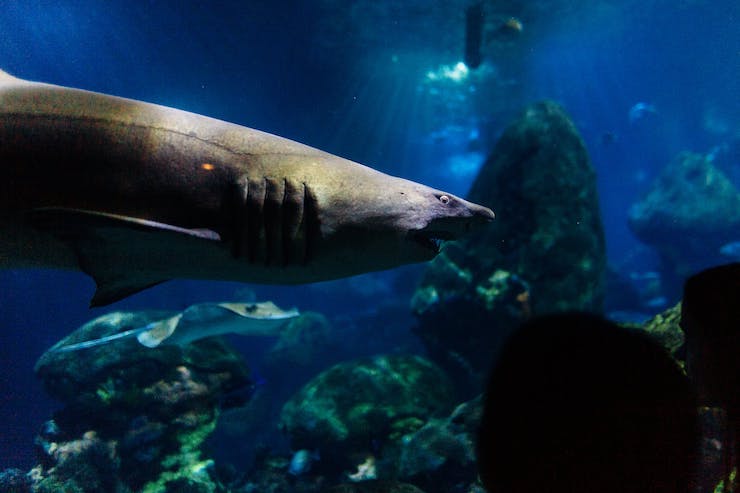Australia Using Drones to Monitor Swimmers from Potential Shark Attacks

Australia has become famous worldwide for it’s wildlife, of which nearly 80% is indigenous to the continent. When many think of Australia, images of koalas, kangaroos, or dingoes come to mind. Australia is also home to the Great Barrier Reef that supports a vastly unique marine life. The reef brings in nearly 2 million tourists each year. Both visitors and locals flock to Australia’s coastlines to enjoy the pristine beaches, amazing surfing conditions, and ample marine wildlife. While most are able to enjoy their time at the beach, anyone visiting the Australian beaches knows to be wary of marine animals that are not necessarily unique, but common in Australian waters, sharks.
Australia’s waters, especially the shallow coastal areas are home to what is known as the “big three” deadliest shark species, the great white, tiger, and bull sharks. Shark sightings along the Australian coast happen nearly every day during the peak season. On average there are around 50 shark attacks each year in Australia, however, most are not fatal. One of the reasons Australia has been able to keep these numbers low, despite a large population of sharks in the area, is due to some of the best trained lifeguards in the world. Surf Life Saving Australia (SLSA) coordinates the majority of Australia’s lifeguard service made up of both professional and volunteer lifeguards. In New South Wales (NSW), SLSA has 129 surf clubs patrolling the coast. In 1973, SLSA established the Westpac Life Saver Rescue Hellicopter Service to aid in rescues and patrol the waters for dangerous animals like sharks and crocodiles. A little over 5 years ago these guards began getting assistance from some critical technology, drones.
Wanting to provide the safest beaches possible SLSA and Westpac began using drones around 2015. The drones enabled them to have a cost effective way to monitor the safety of the beaches. As Australia continued to see a rise in beach-goers and an increase in shark sightings, the drones enabled them to keep people safe. The initial stages of the drone program were so successful that SLSA now has 2 drone programs. As described on SLSA’s website, “The first UAV program is funded through the $16 million NSW Government Shark Management Strategy…The second UAV program is funded through the Westpac Life Saver Rescue Drone Program and is Australia’s first comprehensive national approach to surf rescue using innovative drone technology, giving surf lifesavers more eyes in the sky at patrolled beaches around the country.”
SLSA and Westpac announced new drone protocols for the 2020 season utilizing some of the most comprehensive drone technology available. The first change will be that SLSA lifeguards will not be distracted from their duties to operate a drone. Instead, a team of specially trained drone pilots will be charged with flying and monitoring the images captured by the drones. These pilots will undergo a two day intensive program as to how to use the drones for lifesaving measures and the identification of marine wildlife. Having a background in lifesaving or even swimming is not necessary to be a part of the program that will be stationed at more than 30 key locations along the coast of NSW with an impressive 80 drones.
The second change will be the software on the drones that will go beyond identifying a questionable shape in the water. As part of the NSW Government Shark Management Strategy the drones will be able to gather detailed information about what is being seen below through a live stream. The drones will instantly provide the operator with information like the exact species and size of the creature. This will allow the SLSA to gauge the threat level of a relatively harmless nurse shark to one of the deadly “big three”. A sighting of any shark in the water will be called in by the drone pilot so lifeguards can evacuate the area. The notification will also instantly be uploaded to SharkSmart, a free app that will notify any users of shark sightings. The app will also provide education about the different sharks in the area and key resource for those attacked by sharks, creating a community of shark educated people.
The goal is also to help the government lessen shark attacks, take a census of the sharks in the area, observe their behaviors, and relocate the sharks to safer zones when possible. But ultimately, the drones will help lifeguards keep people safe in the water. It will allow them to see wider views of the beach and react to emergencies faster than ever. If there is an emergency, a drone can be used in a number of way to aid in a rescue mission. The drone can be used to mark and track where a victim may be stranded. It can be used to deliver flotation devices, and even tow victim to a life boat or the shore. But as SLSA’s Cheryl McCarthy said, “It’s having those eyes in the skies to get a different perspective which you don’t have from the beach.” On a beach crowded with hundreds of people, an eye in the sky can make the difference in a life or death situation, especially one that involves some of Australia’s exotic wildlife.
|